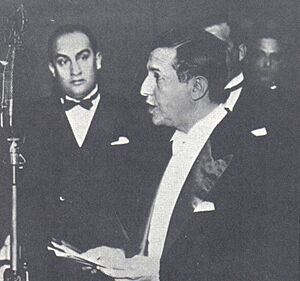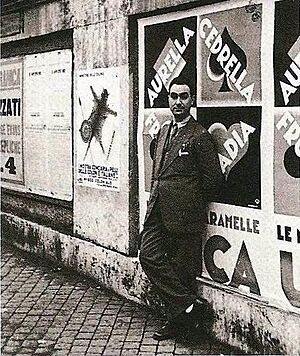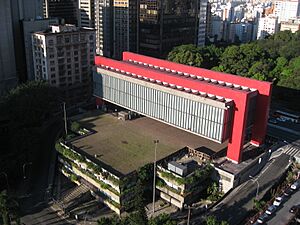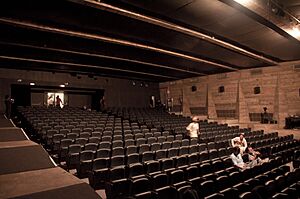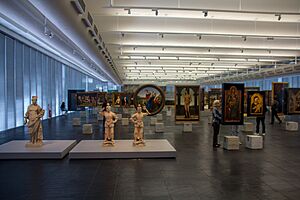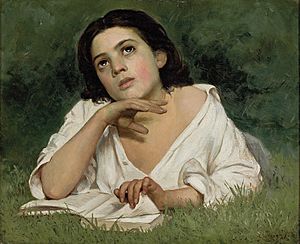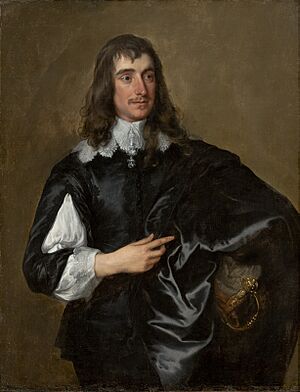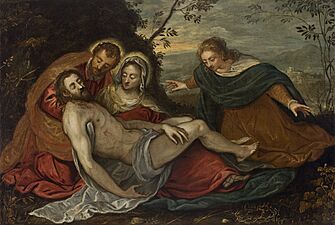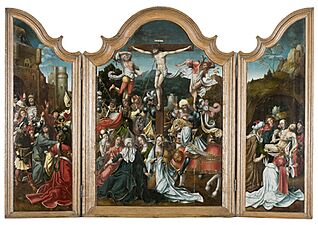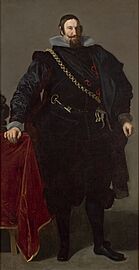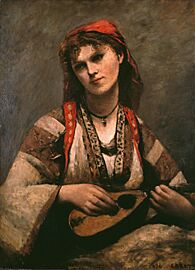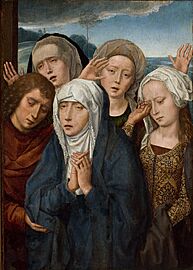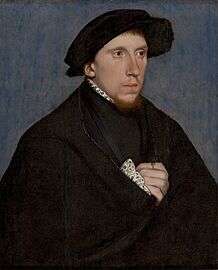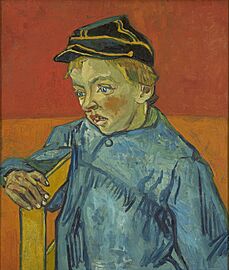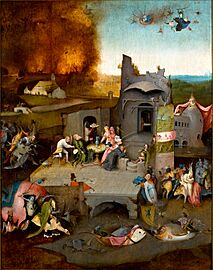São Paulo Museum of Art facts for kids
| Museu de Arte de São Paulo Assis Chateaubriand | |
 |
|
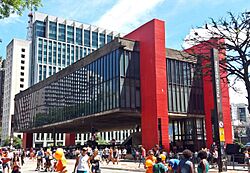 |
|
| Lua error in Module:Location_map at line 420: attempt to index field 'wikibase' (a nil value). | |
| Established | 1947 |
|---|---|
| Location | Avenida Paulista 1578, São Paulo, Brazil |
| Visitors | 729,325 (in 2019) |
| Public transit access | |
The São Paulo Museum of Art (known as MASP) is a famous art museum in São Paulo, Brazil. It is located on Paulista Avenue. The museum is well-known for its unique building, designed by Lina Bo Bardi in 1968. This building is made of concrete and glass. Its main part is held up by two large beams, creating a 74-meter open space underneath. This design makes it a symbol of modern Brazilian architecture.
MASP was started in 1947 by Assis Chateaubriand and Pietro Maria Bardi. It operates as a non-profit organization. The museum has been important in developing museology (the study of museums) and art education in Brazil. It was also the first museum in Brazil to show art created after World War II.
The museum has an amazing collection of European art. Many people consider it one of the best in Latin America and the Southern Hemisphere. It also has a large collection of Brazilian art, prints, and drawings. Smaller collections include African and Asian art, antiquities, and decorative arts. In total, there are over 8,000 art pieces. MASP also has one of the biggest art libraries in Brazil. The entire collection is protected as part of Brazil's National Heritage.
Contents
History of MASP
How the Museum Started
In the late 1940s, Brazil's economy was changing a lot. São Paulo became a major industrial city. Before this, São Paulo's art scene was mostly known for the Week of Modern Art in 1922. However, modern art did not get much attention after that. São Paulo only had one art museum, the Pinacoteca do Estado de São Paulo, which focused on traditional art.
Assis Chateaubriand was a very powerful person at this time. He owned Diários Associados, the biggest media company in Brazil. In the late 1940s, Chateaubriand began a project to buy famous artworks. He wanted to create an art collection that would be known worldwide. He first thought about putting the museum in Rio de Janeiro. But he chose São Paulo because it was a rich city and he believed it would be easier to get money there. Also, after World War II, it was possible to buy great artworks in Europe for good prices.
Chateaubriand worked with Pietro Maria Bardi, an Italian art expert. Bardi had owned art galleries in Milan and Rome. Together, they created a "Museum of Classical and Modern Art." Bardi planned to work on the project for only a year, but he ended up dedicating his whole life to it. He moved to Brazil with his wife, the architect Lina Bo Bardi. He also brought his own library and art collection.
Early Years: 1947 to 1957

The museum opened on October 2, 1947. It showed its first artworks, including paintings by Pablo Picasso and Rembrandt. In its first years, the museum was located on the top floors of the Diarios Associados building in downtown São Paulo. Architect Lina Bo Bardi designed the space. She divided it into four areas: an art gallery, a room for learning about art history, a temporary exhibition room, and an auditorium.
MASP was the first art museum in Brazil to buy modern art. It quickly became a popular place for artists, students, and thinkers. People came not just for the art, but also for the workshops and art classes.
In the 1950s, the museum started the Institute of Contemporary Art. This institute offered classes in engraving, drawing, painting, sculpture, dance, and industrial design. It also created a Publicity School, organized talks about movies and books, and formed a youth orchestra and a ballet company. Many important Brazilian artists taught these courses.
As the museum's educational programs grew, its art collection also expanded. MASP started to gain international fame. From 1953 to 1957, about 100 of the museum's best artworks traveled to museums in Europe, like the Musée de l'Orangerie in Paris and the Tate Gallery in London. This helped show the world how important the collection was. In 1957, the collection was also shown in the United States, at the Metropolitan Museum of Art in New York City. The next year, MASP's art was shown in other Brazilian cities, like Rio de Janeiro. This made the museum well-known around the globe.
Building the New MASP Home
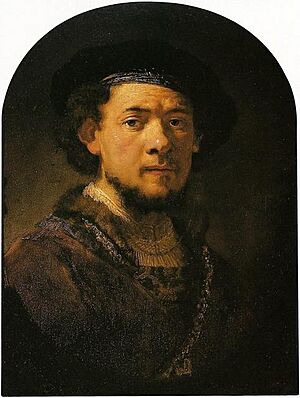
As the art collection grew, the museum needed a new, bigger building. The São Paulo City Hall gave the museum a piece of land on Paulista Avenue. This land used to have the Belvedere Trianon, a popular meeting spot that was torn down in 1951. The land was given to the City Hall with one condition: the view of downtown São Paulo and the Nove de Julho Avenue valley had to stay open.
The new MASP building was designed by Lina Bo Bardi. To keep the view open, Bardi imagined a building that would float above the ground. It would be held up by four huge concrete columns. This design is unique in the world. The main part of the building stands on these four pillars, creating a 74-meter open space underneath. This was the largest open span in the world at that time. The new museum building was built between 1956 and 1968. It was opened on November 7 by Queen Elizabeth II of the United Kingdom during her visit to Brazil.
Sadly, Assis Chateaubriand passed away a few months before the new building opened. His media company also faced financial problems in the 1960s. Because of growing debts and competition, the museum had less money to buy new art.
The Brazilian government stepped in to help pay some of the museum's debts. In the 1970s, the museum's debt to the government was settled. In 1969, MASP's art collection was officially recognized as part of Brazil's national heritage.
In the 1970s, MASP became famous in Asia by holding many exhibitions in Japanese museums. The collection was shown in Japan several times in the 1970s, 80s, and 90s. In 1992, French art and Brazilian landscapes from MASP were shown in museums in Chile and Colombia.
In 2021, the museum announced plans to build a 14-story addition. This new part will be connected underground to the current building and is expected to be finished by 2024.
The MASP Building Design
Construction on the current museum building started in 1957 and finished in 1968. MASP is famous for its amazing brutalist style. It is considered one of the most important buildings in modern Brazilian architecture. The building is on the site of the old Belvedere Trianon. From this spot, you could see downtown São Paulo and the Cantareira Mountains. The person who sold the land asked that the view remain open forever.
Architect Lina Bo Bardi and engineer José Carlos Figueiredo Ferraz designed a building that would float above the ground. It stands eight meters high, supported by four pillars connected by two huge concrete beams. The 74-meter space between the pillars was the largest open span in the world at that time. This building was the first in Brazil to use a special technique for reinforced concrete.
The building is about 10,000 square meters. Besides the permanent and temporary art galleries, it has a library, photo gallery, film gallery, video gallery, two auditoriums, a restaurant, a store, workshop rooms, and offices. Lina Bo Bardi wanted the building to feel simple and welcoming. She said it had "visible concrete, whitewash, a flagstone flooring covering the great Civic Hall, tempered glass, plastic walls." She added, "I didn't search for beauty. I've searched for freedom." In 2003, the building itself was also listed as a national heritage site.
Lina Bo Bardi also came up with a new way to display paintings. She used tempered crystal sheets placed on concrete blocks. This was meant to look like paintings on an artist's easel. On the back of these supports, there used to be labels with information about the artist and the artwork. However, the museum stopped using this display method in the late 1990s.
Between 1996 and 2001, the museum underwent a big renovation. While some changes were needed to fix the building, other changes were controversial. For example, the original floor designed by Lina Bo was replaced. Some architects believe these changes greatly altered Lina's original design.
The Art Collection
How the Collection Was Built

Most of MASP's art collection was put together between 1947 and 1960. Pietro Maria Bardi was in charge of finding and choosing the artworks to buy. Assis Chateaubriand found people and companies to donate money. He would often host fancy dinners to convince potential donors.
Some people criticized these methods. There were also concerns about whether all the artworks were truly authentic. This was partly because MASP was one of the biggest art buyers in the world right after World War II. Unlike other museums that needed many approvals, MASP often bought art very quickly, sometimes even by telegram. The artworks were usually bought from famous auction houses and galleries like Christie's and Sotheby's.
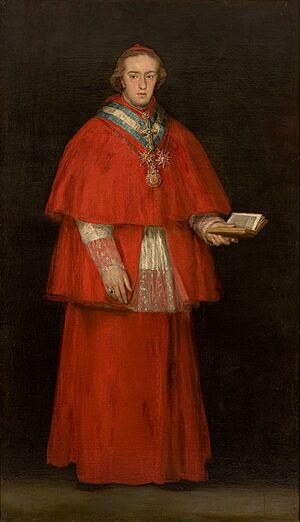
By the late 1960s, Chateaubriand's media company faced problems. It had growing debts and strong competition. This meant less money for the museum. After this, the museum started to get more art through donations from artists, companies, and private collectors.
What's in the Collection?
The São Paulo Museum of Art has the largest and most complete collection of Western art in Latin America. Among its 8,000 artworks, the collection of European paintings, sculptures, drawings, and decorative arts is especially impressive. There are many works from early modern French and Italian art schools. These form the main part of the collection. There are also important pieces from Spanish, Portuguese, Flemish, Dutch, English, and German artists.
The museum also has a significant collection of Brazilian art. This shows how Brazilian art developed from the 17th century until today. There are also important artworks from Latin America and North America.
On a smaller scale, the museum has objects from many different time periods and non-Western cultures. These include African and Asian art. There are also ancient items from Egypt, Etruria, Greece, and Rome. The collection also features objects from Pre-Columbian cultures and medieval European art.
Famous Paintings
Italian School
- Titian – 1 painting
- Tintoretto – 2 paintings
- Giambattista Pittoni – 1 painting, Dioniso e Ariadne
- Raphael – 1 painting, Resurrection of Christ
- Sandro Botticelli – 1 painting, Virgin and Child with the Infant St. John the Baptist
- Andrea Mantegna – 1 painting
- Pietro Perugino – 1 painting
- Alessandro Allori – 1 painting
- Biagio d'Antonio – 1 painting
- Jacopo Bassano – 1 painting
- Giovanni Bellini – 1 painting, Madonna Willys
- Paris Bordone – 1 painting
- Guercino – 1 painting
- Piero di Cosimo – 1 painting
- Francesco Francia – 1 painting
- Giampietrino – 1 painting
- Ottaviano Nelli – 1 painting
- Guido Reni – 1 painting
- Carlo Saraceni – 1 painting
- Jacopo del Sellaio – 1 painting
Brazil and the Americas
- José Ferraz de Almeida Júnior – 6 paintings
- Tarsila do Amaral – 2 paintings
- Pedro Américo – 2 paintings
- Benedito Calixto – 3 paintings
- Emiliano Di Cavalcanti – 2 paintings
- Anita Malfatti – 2 paintings
- Victor Meirelles – 4 paintings
- Candido Portinari – 17 paintings
- Vicente do Rego Monteiro – 2 paintings
- Diego Rivera – 2 paintings
- Lasar Segall – 2 paintings
- Gilbert Stuart – 1 painting
- Alfredo Volpi – 1 painting
- Eliseu Visconti – 2 paintings
French School
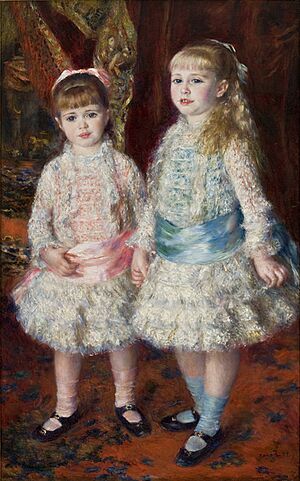
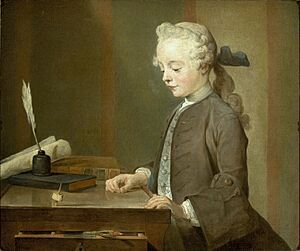
- Pierre Bonnard – 1 painting
- Paul Cézanne – 5 paintings
- Jean-Baptiste-Siméon Chardin – 1 painting
- François Clouet – 1 painting
- Jean-Baptiste-Camille Corot – 5 paintings
- Gustave Courbet – 2 paintings
- Jean-Baptiste Debret – 1 painting
- Edgar Degas – 3 paintings
- Eugène Delacroix – 4 paintings
- François-Hubert Drouais – 1 painting
- Jean-Honoré Fragonard – 2 paintings
- Paul Gauguin – 2 paintings
- Pierre Gobert – 1 painting
- Jean Auguste Dominique Ingres – 3 paintings
- François Lemoyne – 1 painting
- Fernand Léger – 1 painting
- Édouard Manet – 4 paintings
- Henri Matisse – 2 paintings
- Pierre Mignard (and workshop) – 1 painting
- Amedeo Modigliani – 5 paintings
- Claude Monet – 2 paintings, including Boating on the River Epte
- Jean-Marc Nattier – 4 paintings
- Jean-Baptiste Pater – 1 painting
- Pablo Picasso – 3 paintings, including Portrait of Suzanne Bloch
- Nicolas Poussin – 1 painting
- Pierre-Auguste Renoir – 12 paintings, including Pink and Blue
- Henri de Toulouse-Lautrec – 10 paintings
- Antoine Vestier – 1 painting
- Édouard Vuillard – 3 paintings
Spanish School
- El Greco – 2 paintings
- Francisco Goya – 4 paintings
- Bartolomé Esteban Murillo – 1 painting
- Diego Velázquez – 1 painting, the Portrait of the Count-Duke of Olivares
- Francisco de Zurbarán – 2 paintings
Dutch, Flemish and German Schools

- Hieronymus Bosch – 1 painting
- Lucas Cranach the Elder – 1 painting
- Jan van Dornicke – 1 painting
- Anthony van Dyck – 2 paintings
- Frans Hals – 3 paintings
- Hans Holbein the Younger – 1 painting
- Quentin Matsys – 1 painting, Ill-Matched Marriage
- Hans Memling – 1 painting
- Jan van Oolen – 1 painting
- Frans Post – 5 paintings
- Rembrandt – 1 painting, Portrait of a Young Man with a Golden Chain
- Peter Paul Rubens (and workshop) – 1 painting
- Salomon van Ruysdael – 1 painting
- Vincent van Gogh – 5 paintings
English School
- John Constable – 1 painting
- Thomas Gainsborough – 3 paintings
- William Hogarth – 1 painting
- Thomas Lawrence (and workshop) – 2 paintings
- Henry Raeburn – 1 painting
- Joshua Reynolds – 1 painting
- George Romney – 1 painting
- J. M. W. Turner – 1 painting
The museum also has smaller collections of photographs, costumes, textiles, and other interesting objects.
Art Recovery
On December 20, 2007, two valuable paintings were taken from MASP: O Lavrador de Café (The Coffee Farmer) by Cândido Portinari, and Portrait of Suzanne Bloch by Pablo Picasso. The individuals entered the museum and left with the paintings very quickly. Experts estimated the paintings were worth a lot of money.
Thankfully, both artworks were found by the Brazilian police a few weeks later, on January 8, 2008. They were recovered in the city of Ferraz de Vasconcelos. Two people were arrested in connection with the incident. This event was a big challenge for the museum. It was found that the museum did not have a modern alarm system or sensors. Security cameras recorded the event, but the images were not clear. The museum's president stated that they would improve security after this incident.
Gallery
-
Tintoretto (Italian, 1518–1594) Pietà, 1560/65.
-
Victor Meirelles - Moema.jpg
Victor Meirelles (1832–1903). Moema, 1866.
-
Jan van Dornicke (1470–1527). The Crucifixion Triptych, c. 1517.
-
Velázquez (Spanish, 1599–1660) Portrait of the Count-Duke of Olivares, 1624.
-
Delacroix - outono01.jpg
Delacroix (French, 1798–1863) The autumn - Bacchus and Ariadne, 1856/63.
-
Corot (French, 1796–1875) Gypsy Girl with a mandolin, 1874.
-
Hans Memling (German, 1435–1494) The mourning Virgem with St. John the Baptist and the pious women of Galilee, 1485/90.
-
Hans Holbein (German, 1497–1543) The poet Henry Howard, Count of Surrey, c. 1542.
-
Van Gogh (Dutch, 1853–1890) The Student, 1888.
-
Guidoreni - lucrecia02.jpg
Guido Reni (1575–1642). The Suicide of Lucretia, 1625–1640.
-
Hieronymus Bosch (1450–1516). The Temptation of Saint Anthony, c. 1500.
See also
 In Spanish: Museo de Arte de São Paulo para niños
In Spanish: Museo de Arte de São Paulo para niños
- Museum of Contemporary Art, University of São Paulo
- Ema Gordon Klabin Cultural Foundation
- Eva Klabin Foundation
- MASP Antique Market
- Museu Nacional de Belas Artes
- Pinacoteca do Estado de São Paulo


